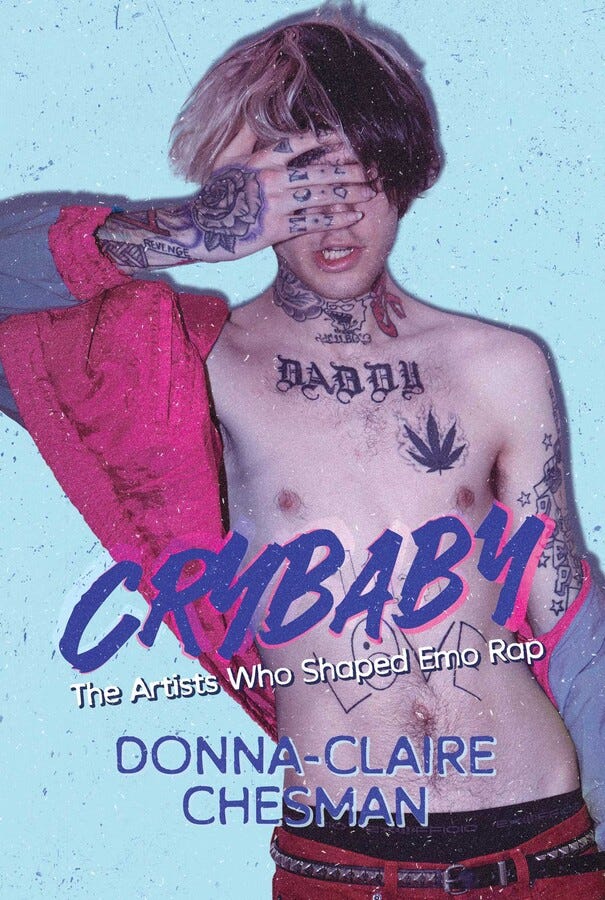Mac Miller and Emo Rappers: A Conversation with Donna-Claire Chesman
Donna-Claire Chesman stops by to talk about her two most recent books
As I mention periodically in this newsletter, I work for the music streaming service Audiomack. One of the cool things about Audiomack is that we have an editorial branch called Audiomack World that adds deeper context to your favorite songs. For a few years, Audiomack World was headed up by Donna-Claire Chesman, a longtime music writer. While it was sad when Chesman left the company, it was for good reason. She wanted to dedicate more time to her writing.
Over the last few years, Chesman has released two books: Crybaby: The Artists Who Shaped Emo Rap and The Book of Mac: Remembering Mac Miller. Earlier this week, we sat down for an hour to talk about her creative process, the technology that enabled music in the 2010s, and what we mean when we describe a song as “emo.”
Your latest book Crybaby came out in the last few weeks. It focuses on a genre typically called “emo rap.” What drew you to that topic?
Obviously, I like the genre. It's something I listen to a lot in my free time, so it was kind of an easy draw there. Secondly, most of it came to me in a dream. That's kind of how I make most of my decisions, both financial and creative. If I start dreaming about it repeatedly, then definitely I should pursue it.
I think the topic in general is interesting, though. There was this stasis in youth culture in the 2010s that will never happen again. I was very keen to capture this time when social media was on the rise, you could upload your music online for free, and all these little nuances that came and went so fast.

I think one interesting thing you do in your books is situate artists and scenes in a historical setting. Do you think context like that is important for your readers to understand who you’re writing about?
Absolutely. If you take away the context of the immediate moment, it's not really special anymore. Being a sad teenager is not a unique experience. But when you put these particular artists, like Lil Peep and Juice WRLD, in the context of the 2010s, it feels like a movement rather than something normal.
You connect emo rap to earlier artists, like Lil Wayne, but do you think the technology of the 2010s was really what allowed that scene to flourish? And by “technology” I’m talking about the ability to make music on your computers and distribute it worldwide for cheap.
Emo rap could only have happened with direct-to-consumer uploading. If there were still barriers to entry to releasing music, if you still had to get a deal and get a studio and have that subsidized by your label, this music would have never popped in the same way. Labels showed up after the fact. It was kids doing it on their own that convinced labels that there was money to be made.
Compare the emo rap scene to the earlier emo rock scene. If you played emo rock in the 2000s, you had to tour a bunch of DIY venues. You had to play basements and backyards where people were getting punched in the face. That’s how you did it. With emo rap, all you needed was FL Studio or GarageBand and somewhere to put your music, like YouTube. That technology was critical.
I always find it interesting that for decades playing live was vital to establishing yourself as a musician. The internet made that unnecessary. There are people who blow up and have never played a show before. Is that a bad thing?
Keep reading with a 7-day free trial
Subscribe to Can't Get Much Higher to keep reading this post and get 7 days of free access to the full post archives.


